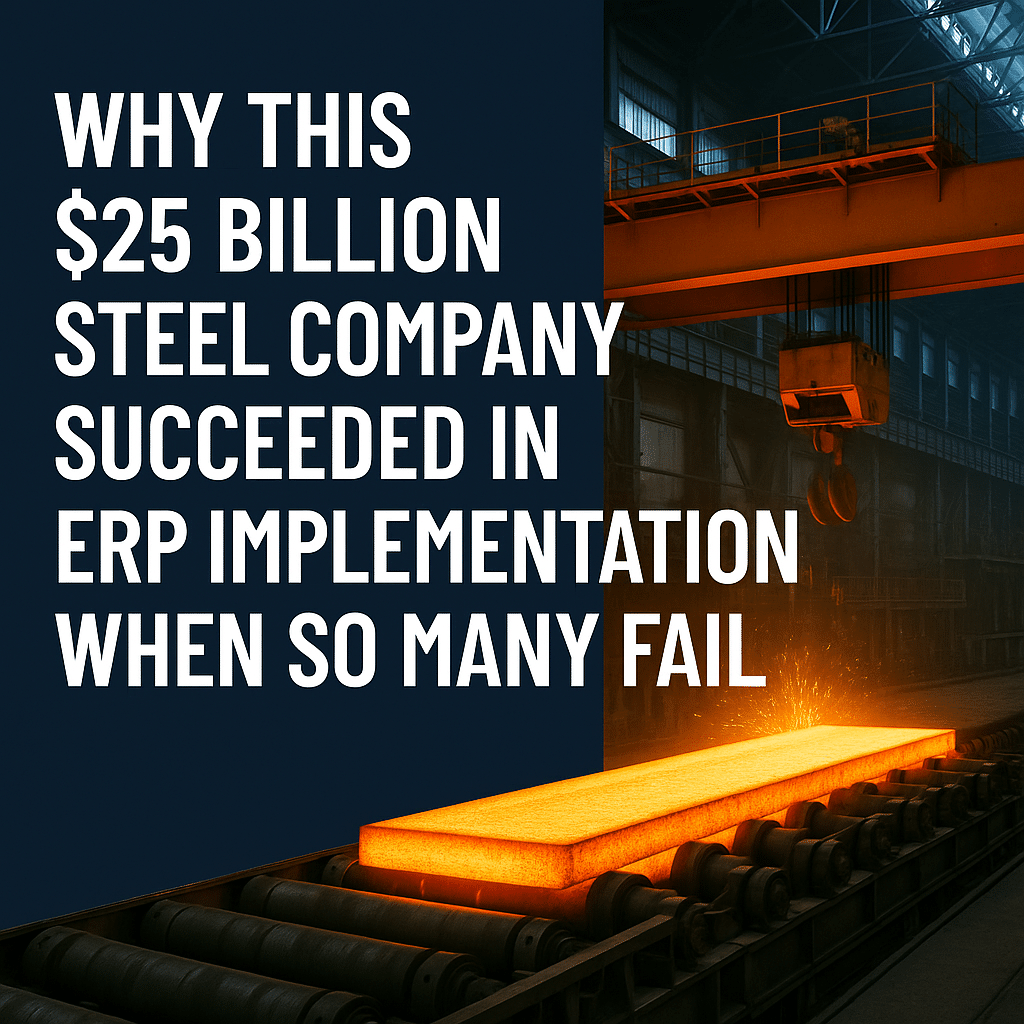When most headlines shout about failed ERP implementations and digital transformations, the success stories often go untold. But understanding what makes a transformation succeed is just as critical—if not more—than dissecting what went wrong.
In this blog, we highlight a case study of a $25 billion multinational steel company that defied the odds and executed one of the most successful ERP implementations we’ve seen at Third Stage Consulting. Their approach wasn’t about shiny tech or following the latest trends. Instead, it was about prioritizing business value, strategic focus, and strong ownership.
Table of Contents
ToggleThe ERP Failure Rate Is Real – But Not Inevitable
Studies show 70–80% of ERP implementations fail to meet expectations. At Third Stage Consulting, we’ve analyzed countless case studies highlighting what not to do.
But here’s what we don’t talk about enough: what companies that succeed actually do differently.
This North American steel giant—with 25,000 employees and a history of disrupting the global steel market—offers the perfect blueprint.
Who Is This Company?
While not a household name, this industry innovator is known in business circles and even featured in Clayton Christensen’s The Innovator’s Dilemma for its radical approach to steel manufacturing. It revolutionized the industry in the ’70s and ’80s by undercutting competitors with more efficient processes and lower prices.
That same innovative mindset powered their ERP success.
5 Things They Did Differently (That You Should Too)
1. Laser-Focused on Business Value, Not Tech Hype
This company didn’t care about being “cutting-edge” or “cloud-first.” In fact, their leadership was proudly anti-technology.
If a software feature didn’t add value to customers or employees—they didn’t implement it. Period.
They didn’t chase trends. They evaluated every decision through one lens: does this improve business outcomes?
2. Resisted the “One-Size-Fits-All” Trap
Many companies fall into the trap of consolidating everything into a single ERP platform, regardless of operational nuances. This client chose hybrid architecture, consolidating where it made sense and retaining separate systems where needed.
Why? Because forcing full consolidation didn’t deliver ROI.
3. Said NO to Cloud (Because It Didn’t Make Sense)
During the multi-year implementation, their vendor pushed hard to shift from an on-premise solution to the new cloud version.
Their response?
“The cloud version lacks the depth and stability we need for our manufacturing complexity. It’ll cost more and deliver less.”
They made an unpopular decision—and it was the right one for their business.
4. Owned the Project (And Didn’t Let Vendors Call the Shots)
Unlike many companies that defer to system integrators or consultants, this client took complete ownership of the project. Third Stage, the software vendor, and system integrators were advisors—not decision-makers.
Even when the timeline slipped, they took control by adjusting staffing levels and pushing back on overbilling—keeping the project lean and intentional.
5. Lived Their Culture (Even if They Refused to Call It That)
Their organizational culture was so aligned it didn’t need to be talked about—it was simply baked into everything they did.
They didn’t like terms like “change management” or “culture,” but they practiced them better than most. Their team was united, efficient, and relentlessly focused on results.
Key Takeaways for Your ERP Implementation
✅ Lead with business strategy, not technology.
✅ Don’t buy into buzzwords or vendor pressure.
✅ Say no when it doesn’t serve customers or employees.
✅ Make decisions for your business, not for your consultants.
✅ Live and breathe ownership—don’t outsource it.
Final Thoughts
This project was one of the most successful we’ve seen—and not because it was flashy or fast. It was successful because it was disciplined, thoughtful, and focused on long-term value.
If more organizations approached ERP like this steel company, we’d see far fewer failures in this space.
Want more real-world lessons from companies that got it right? Download our free guide:
🔗 Lessons from 1,000 Digital Transformations






